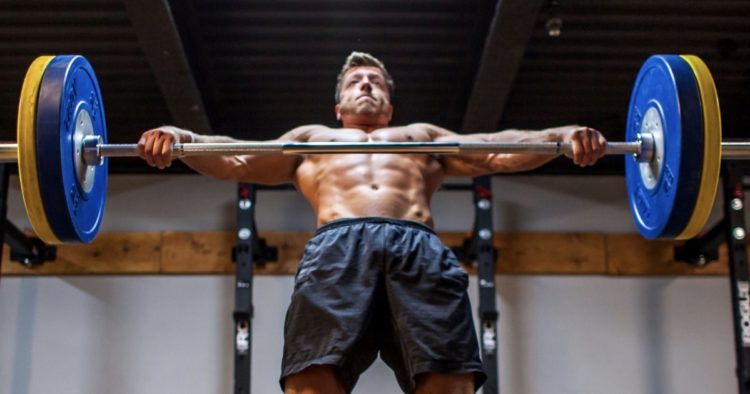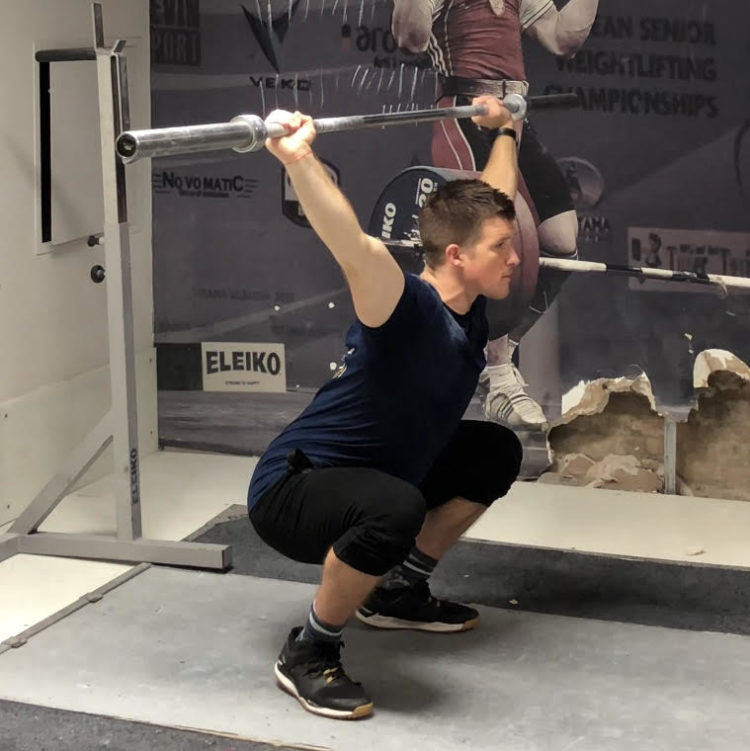The sport of weightlifting is equal parts technique and strength. One doesn’t go without the other. While technique work is absolutely crucial to perfect both the snatch and the clean and jerk, being strong enough to push numbers is also, of course, an essential component of the sport.
It can be argued that snatches and clean and jerks aren’t really “strength building” movements. They’re more known to develop agility speed, power and explosiveness — which explains the popularity of power cleans for track and field athletes.
When it comes to strength building for weightlifters, there’s more to just getting super jacked and adding mass to your body. Training your central nervous system to adapt to a certain stimulus is something that’s often overlooked but extremely beneficial for athletes to improve their 1RM.
What Is Overload Training?
Here’s an example.
For argument’s sake, let’s say your back squat is your strongest movement. Your 1RM is 125kg yet your best clean and jerk is 95kg. Theoretically, that’s 75% of the heaviest weight your body has lifted. Now, let’s say you get an opportunity to take a crack at 100kg for a third attempt at your next competition. That’s 80% of your back squat’s 1RM. At this point, your body is probably gassed and you may not have enough juice left in the tank. You take a hail Mary attempt but your body panics in reaction to the feeling of the weight as you crack the bar off the ground. You clark it or barely rack the weight, the squat pins you down, and you don’t complete the lift.
Heavy weight is heavy weight. No matter the number loaded on the bar. By training your body to react to the stimulus of what “heavy” feels like, you’ll be able to not only attack weights that used to unleash anxiety but you’ll be able to quiet those reactions to successfully make heavy attempts.
This principle is called “overload training”.
Chinese, Russian, Bulgarian and other coaches around the world have adapted this type of training to build resilient responses to heavy weights in their athletes. It’s no wonder many of them can approach a world record attempt and make it look like a routine training lift. Aside from their immaculate technique, they’ve trained their minds, bodies, and nervous systems to respond a certain way by overloading specific movements and positions.
Here are 6 movements to train your central nervous system into a state of overload.
Note: Any lifter looking to add the overload principle to their training MUST have proficient technique in these positions to start. Without displaying correct technique for each position you may end up developing bad habits or improper movement patterns. Only train these moves under the supervision of a credentialed coach.
View this post on Instagram
1. Bottoms Up Squat (Front or Back)
To start, you’ll need a few blocks (or a rack with pins if it’s available to you) and set it to a height where the bar (with plates) rests around the level of your sternum. The goal is to have you start just above 90 degrees or in a quarter squat position so make adjustments as you see fit.
Bring yourself under the bar and set your core as you would for any regular squat movement. From there, you’ll stand the bar up and then slowly bring it back down to the blocks/pins. A pretty straight forward exercise but if performed correctly, it can help increase your body’s nervous system response to moving heavy loads through the concentric phase of a squat.
Doing so through a partial range can help isolate weaknesses and train your legs to power through any sticking points. In terms of percentages, using anything above 85% of your back squat’s 1RM can be an appropriate weight to use.
For example, you could start by doing a few sets of 5 reps at a lighter weight. Then, after a few weeks of letting your body adapt to the exercise and stimulus, you can work up to heavy doubles or singles at 110%+ of your squat’s 1RM.
[Related: 5 Benefits of the Half Squat]
View this post on Instagram
That’s Lu Xiaojun with a 400kg front rack hold — almost twice his 1RM clean & jerk!
2. Front Rack or Jerk Dip Holds
The front rack position is crucial in Olympic weightlifting. Not only do you need strong shoulders, lats and serratus muscles to hold it up, the fact that it’s resting on your chest can make it feel a lot more uncomfortable than most positions.
Using heavy jerk dips or front rack holds can help overload this kind of stimulus to your body. It can translate to building a stronger front squat, jerk and clean. Just think: by doing these holds regularly, you can bank on having enough muscular endurance to stay tight under the bar before putting it over head when attempting a heavy single or new personal best.
Using percentages higher than your clean and jerk’s 1RM are your best bet in creating a more durable front rack position and midline. This exercise can be done as a complimentary movement after a jerk focused day. A few asian countries—such as China, Japan and South korea—also use this exercise to keep feeding heavy stimulus to their athletes’ bodies a week out from any major competition.
3. Overhead Squats or Snatch Balances
Being the most technical movement in Olympic Weightlifting, the snatch requires a certain balance of stability and strength. Maintaining core tension while holding the weight overhead in a full squat position is not something every barbell movement demands. Training the concept of overload for the snatch can be done in two ways depending on the lifter’s capabilities and/or weaknesses.
Team USA’s -87kg lifter Mattie Rogers shows both the snatch balance and the overhead squat, done at around 115% of her snatch’s 1RM, in slide number 3 here.
Training the body to brace under a weight the lifter has yet to lift (or is on their way to snatching eventually), is a great way to create stability, core endurance and also confidence in the bottom position.
[Related: 4 Exercises to Strengthen Your Receiving Position In the Snatch]
4. Eccentric Back Squats To Pins
Similar to the bottoms up squat, eccentric squats train full body tension under maximal load. The reason why a coach might prescribe this type of overload squat movement is to help the lifter build better endurance in their lower back, legs and core. You can perform this movement to full depth for more time under tension or use a partial range of motion depending on the specific weakness you’re targeting.
For example, a lifter that collapses in their midline every time they pull the bar off the ground might only use a partial range and load 100%+ of their back squat 1RM. Whereas a lifter that has trouble keeping an upright torso during cleans or volume squats can train this eccentric variation to their full depth, but at 85-95% of their 1RM.
The goal is to descend the weight as slow as possible and bring it to meet the pins or blocks used as markers for the end position. If the lifter can’t control the weight down all the way to the pins, either take some weight off or bring the pins up depending on what they’re focused on.
[Related: 6 Ways to Eccentrically Load Your Lifts (And Why You Should)]
5. Rack Shrugs or Pulls
Rack pulls can give weightlifters a great advantage in developing a stronger pull in both the clean and the snatch. The short range helps emphasize a strong finish by forcing the lifter to push harder and extend faster while maintaining an upright torso. Rack pulls will overload your traps and rhomboids, forcing your upper back to stay engaged under near maximal load. It’s best to do them mid thigh or higher to focus more on an explosive and aggressive finish. Training this kind of power will translate into the speed and connection of your turnover—especially during heavier singles.
When prescribing them to a lifter, doing 3 to 5 reps at 100%+ of their 1RM (whether it be clean or snatch) will provide the appropriate stimulus before running into muscular fatigue.
View this post on Instagram
Check out Noah Ohlsen doing a jerk recovery at 405lbs a few years back.
6. Jerk Recoveries
Author’s note: This exercise can be tricky to set up if you don’t have the appropriate equipment at your gym. Make sure you have a stable enough rack (or blocks) set up to support the load you’re looking to use. Using long pins is preferable to mitigate any chances of the weight rolling or shifting.
For lifters that struggle with confidence in the overhead position of the jerk, this is a great technical exercise to do at a lighter weight.
When using the concept of overload, proficient lifters who are looking to gain more structural tolerance might want to implement jerk recoveries into their training. This movement helps build stability in the alignment of your shoulders, elbows, and wrists. It also helps strengthen your legs by forcing you to settle into the deepest split position, which realistically is where you’ll be catching heavy jerks.
The more you can train your body to know what to expect during a 1RM attempt, the more confidence you’ll have to successfully make your lifts. It’s best to start around 90% of your 1RM for a few doubles of triples. Once your body has adapted to this type of stimulus, work your way to 100%+ for a few singles to get the most from the overload principle.
[Related: 5 Exercises to Fix a Lagging Jerk]
Wrapping Up
The goal of Olympic weightlifting is to lift as much weight as possible in both the snatch and clean and jerk. So, why not train your body to handle heavy weights in a variety of ways? The better your full body strength becomes, the better you’ll be able to handle the loads when it really matters.

